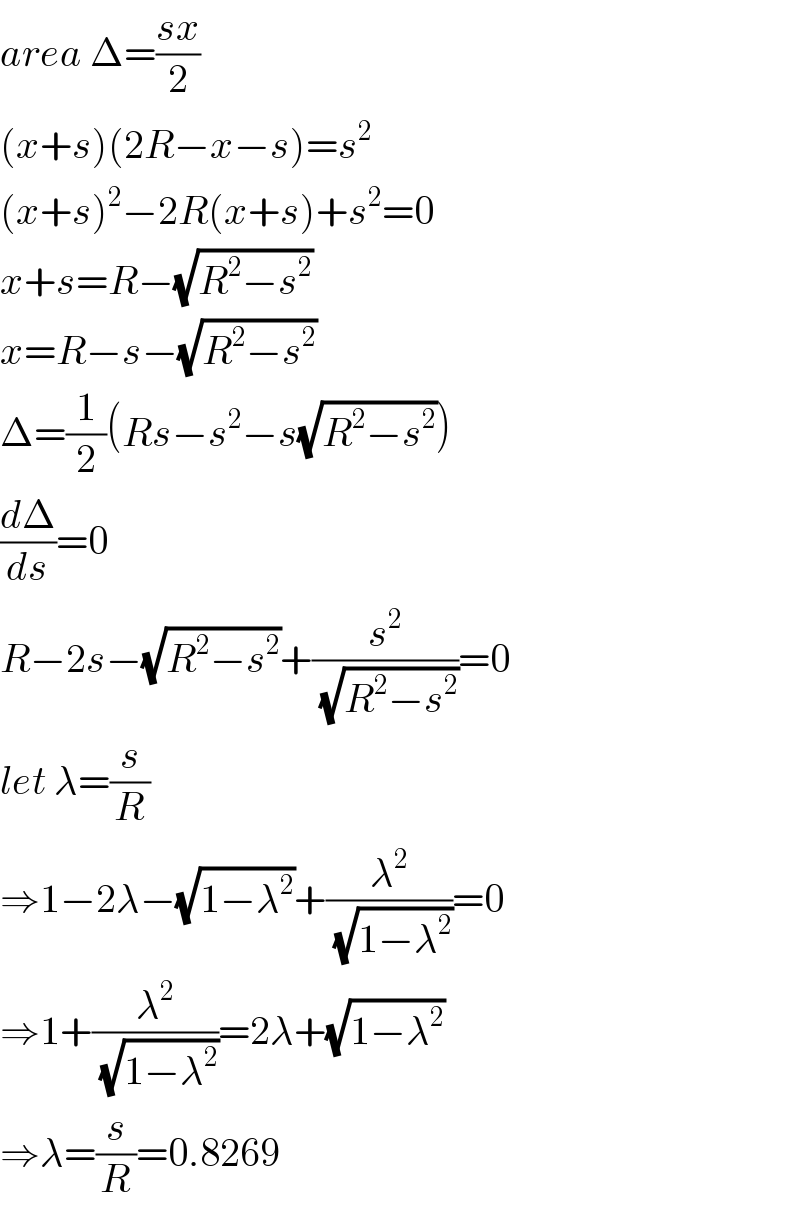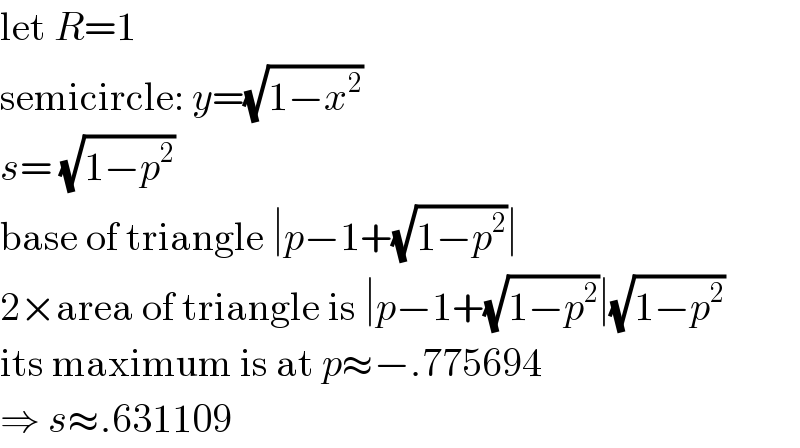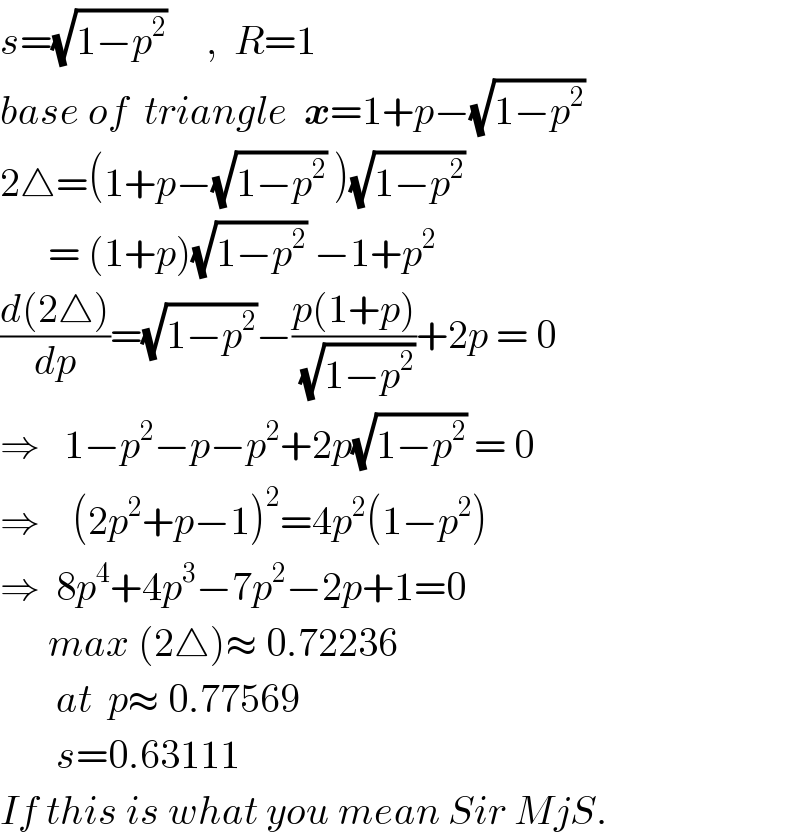
Question and Answers Forum
Question Number 121539 by ajfour last updated on 09/Nov/20

Commented by ajfour last updated on 09/Nov/20

Answered by mr W last updated on 09/Nov/20

Commented by mr W last updated on 09/Nov/20

Commented by ajfour last updated on 09/Nov/20
Thank you sir. i think you have checked when is the area a maximum for we get two positive values of lambda.
Commented by ajfour last updated on 09/Nov/20

Commented by ajfour last updated on 09/Nov/20

Answered by ajfour last updated on 09/Nov/20

Commented by ajfour last updated on 09/Nov/20

Answered by MJS_new last updated on 09/Nov/20

Commented by MJS_new last updated on 09/Nov/20

Commented by ajfour last updated on 09/Nov/20

Commented by ajfour last updated on 09/Nov/20

Commented by ajfour last updated on 09/Nov/20

Commented by MJS_new last updated on 09/Nov/20

